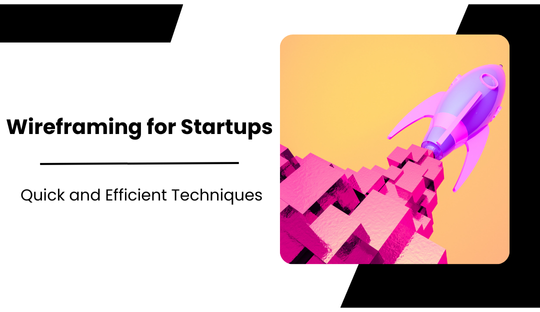
Wireframing for Startups: Quick and Efficient Techniques
Starting a new venture comes with its own set of challenges, and creating a compelling digital presence is one of the most crucial. For startups, the initial phase of website and application development can be daunting. Wireframing, a process of creating a visual guide to suggest the structure of a website, plays a pivotal role in this journey. At Flykez CO, a leading creative brand company in Liechtenstein, we offer expertise in website design & development, search engine optimization, brand design & brand identity, digital marketing, and UI & UX design. This blog post will delve into quick and efficient wireframing techniques tailored for startups, ensuring a smooth and effective design process.
Why Wireframing is Essential for Startups
Wireframing helps in visualizing the layout and functionality of a website or app before the actual development begins. For startups, this means:
- Clarity of Vision: Wireframes provide a clear and tangible representation of the product, making it easier to communicate ideas with stakeholders and team members.
- Cost Efficiency: Identifying issues early in the wireframing stage prevents costly changes during development.
- User-Centric Design: Wireframes focus on user experience (UX), ensuring that the end product is user-friendly and meets the target audience’s needs.
Also Read About How to Conduct Effective Wireframe Usability Testing
Quick and Efficient Wireframing Techniques
- Start with Low-Fidelity Wireframes
Low-fidelity wireframes are basic sketches that outline the general structure and layout without delving into details. They are quick to create and are ideal for brainstorming and initial concept discussions.
- Tools: Pen and paper, or digital tools like Balsamiq and Moqups.
- Focus: Structure, layout, and placement of key elements like headers, footers, navigation menus, and content areas.
- Iterate with High-Fidelity Wireframes
Once the basic structure is agreed upon, transition to high-fidelity wireframes. These are more detailed and include specific design elements such as typography, color schemes, and interactive features.
- Tools: Adobe XD, Figma, and Sketch.
- Focus: Detailed design, interactive elements, and user flow.
- Incorporate Interactive Wireframes
Interactive wireframes simulate user interactions, providing a realistic preview of how the final product will function. This helps in identifying usability issues and improving the overall user experience.
- Tools: InVision, Axure RP.
- Focus: User interaction, navigation flow, and usability testing.
- Utilize 3D Elements in UI
Integrating 3D elements can enhance the visual appeal and engagement of the wireframe. However, it’s crucial to balance aesthetics with performance to avoid slow load times.
- Tools: Blender, Adobe Dimension.
- Focus: Visual engagement, user interaction.
The Wireframe Process for Startups
- Research and Define Objectives
Understand the target audience, market needs, and business objectives. This foundational research guides the design process and ensures that the wireframe aligns with the startup’s goals.
- Sketch Initial Concepts
Begin with simple sketches to explore different layout options and structures. This step is about experimenting with various ideas without getting bogged down by details.
- Develop Low-Fidelity Wireframes
Create low-fidelity wireframes to establish the basic structure and layout. Focus on functionality and the overall user journey.
- Iterate to High-Fidelity Wireframes
Refine the low-fidelity wireframes into high-fidelity versions, adding design details and interactive elements. Ensure that the wireframes are detailed enough for developers to follow.
- Conduct User Testing
Test the wireframes with real users to gather feedback and identify any usability issues. Use this feedback to make necessary adjustments before moving to development.
Best Practices for Effective Wireframing
- Keep it Simple: Start with simple, clear designs that prioritize functionality over aesthetics. This ensures that the core user experience is solid before adding complexity.
- Focus on Usability: Ensure that the wireframe design is intuitive and easy to navigate. Prioritize user needs and behaviors.
- Iterate Based on Feedback: Use feedback from stakeholders and users to continuously improve the wireframe. Iterative design ensures that the final product meets user expectations.
- Collaborate with Stakeholders: Involve stakeholders in the wireframing process to ensure that all perspectives are considered. This collaboration leads to a more well-rounded design.
Conclusion
Wireframing is a vital step in the design process, especially for startups looking to build a strong digital presence efficiently and effectively. At Flykez CO, we leverage our expertise in wireframe design to help startups create user-centric, visually appealing, and functional websites and apps. By incorporating techniques like low-fidelity and high-fidelity wireframes, interactive elements, and user testing, we ensure that the final product not only meets but exceeds user expectations.
For more information on our services and how we can assist you in your wireframing journey, visit our website at www.flykez.com. Let Flykez CO be your partner in transforming your startup’s vision into a digital reality.
